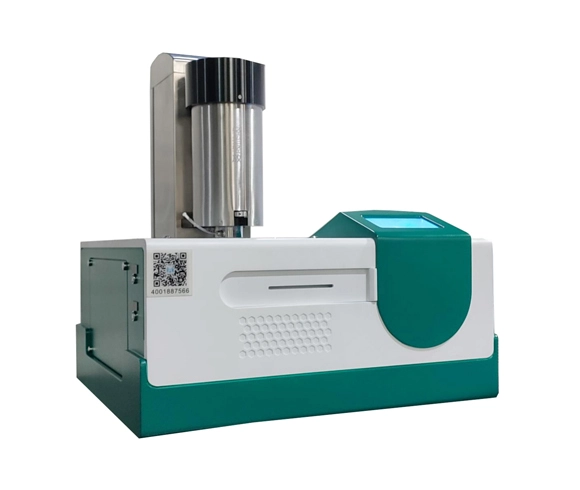HQG-1/2/3/4 Thermogravimetric Analyzer (TGA)
Thermogravimetric analyzers (TG, TGA) are extensively employed across research and development, process enhancement, and quality assurance in various sectors including plastics, rubber, coatings, pharmaceuticals, catalysts, inorganic materials, metals, and composites. These thermogravimetric analysis equipments observe alterations in sample quality concerning temperature or time during heating, holding, or cooling processes. TGA analyzer price varies depending on the features and specifications required for different applications.
Instrument Feature of Thermogravimetric Analyzer (TGA)
01
The furnace is automatically raised and lowered with accurate positioning, which improves the repeatability of measurement. Experience the precision and efficiency of automatic thermogravimetric analysis with our advanced TGA thermogravimetric analysis instruments.
02
Our TGA simultaneous thermogravimetric analyzer is the smallest in the country. The thermogravimetric analyzer can reduce signal loss and interference.
03
Atmosphere control system use the flow controller (MFC), which can automatically switch the gas with a stable flow rate in the process of experiment, with high precision, good repeatability and fast response.
04
Users can use standard samples for temperature and thermogravimetric calibration.
05
Thermogravimetric analyzer can handle everything from trace samples to large-dose samples. The thermogravimetric analysis equipment can meet the testing requirements of various samples under different conditions. (Replace the support rod, and the thermogravimetric analysis machine can support samples up to a maximum of 5g.)
06
The thermogravimetric analysis instrument is equipped with a rapid cooling system. (The furnace temperature drops from 1550 ℃ to room temperature for ≤ 15 minutes.)
07
All measurement processes is automatically completed and plotted. The rich software functions of thermogravimetric analyzer can complete the routine data processing of TG, DTG, and DDTG.
08
In the process of collecting samples, the system can take screenshots at any time and automatically change the range according to the size of the output signal.
09
The user provides the calculation formula and method, and Henven, a leading TGA thermogravimetric analyzer supplier, can provide the corresponding software development products.
10
The independently developed constant temperature controller, along with the constant temperature gas chromatography-mass spectrometry connector and constant temperature belt, which can fully ensure the secondary detection of the tar and various reaction gases.
What is TGA Thermal Analysis Used for?
Material Composition: TGA thermal analysis helps determine the composition of materials by measuring the weight loss associated with the decomposition of different components.
Thermal Stability: Thermal gravimetric analyzer assesses the thermal stability of materials by identifying the temperatures at which they begin to decompose.
Decomposition Kinetics: TGA thermal analysis provides insights into the kinetics of thermal decomposition, helping to understand the rate and mechanism of degradation.
Moisture and Volatile Content: TGA analyzer quantifies the amount of moisture and volatile substances in a material by measuring weight loss at specific temperatures.
Oxidative Stability: TGA analyzer can evaluate the oxidative stability of materials by analyzing weight changes in an oxidative environment.
Filler Content in Polymers: TGA gravimetric analysis, TGA material analysis,
TGA chemical analysis, TGA gas analysis determines the amount of filler material in polymers by measuring the residual mass after thermal decomposition.
Purity Analysis: TGA analyzer can be used to assess the purity of materials by identifying and quantifying impurities based on their thermal decomposition profiles.
Instrument Parameter of Thermogravimetric Analyzer (TGA)
If you want to know more types of thermal mechanical analyzer, please visit our website.




Comments
Post a Comment